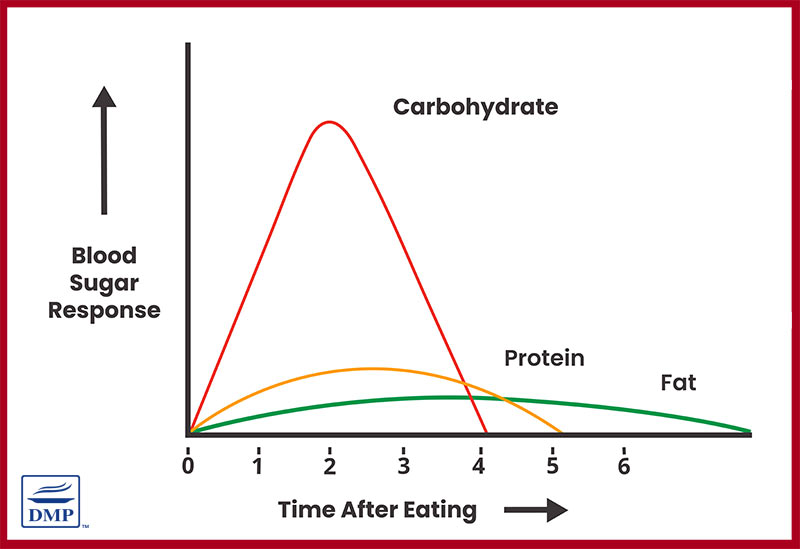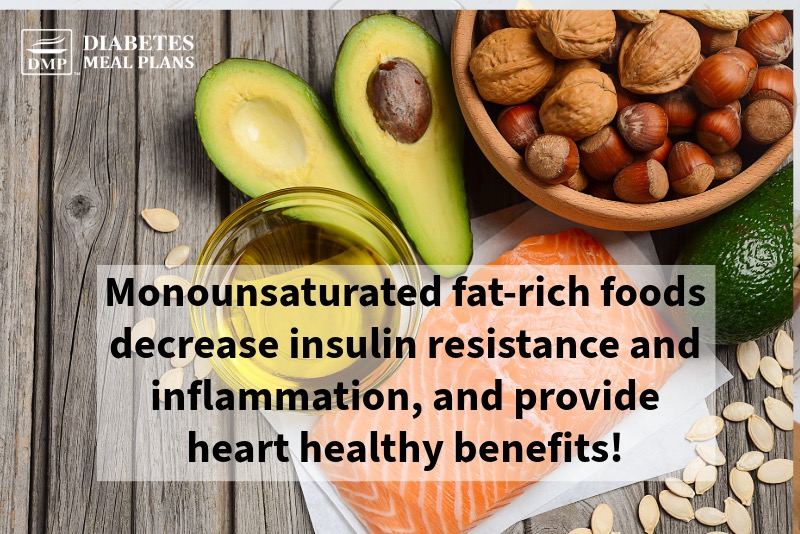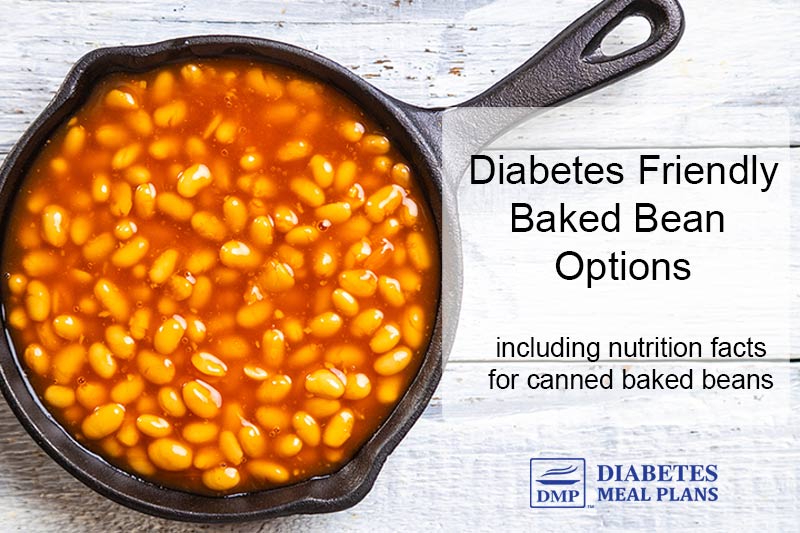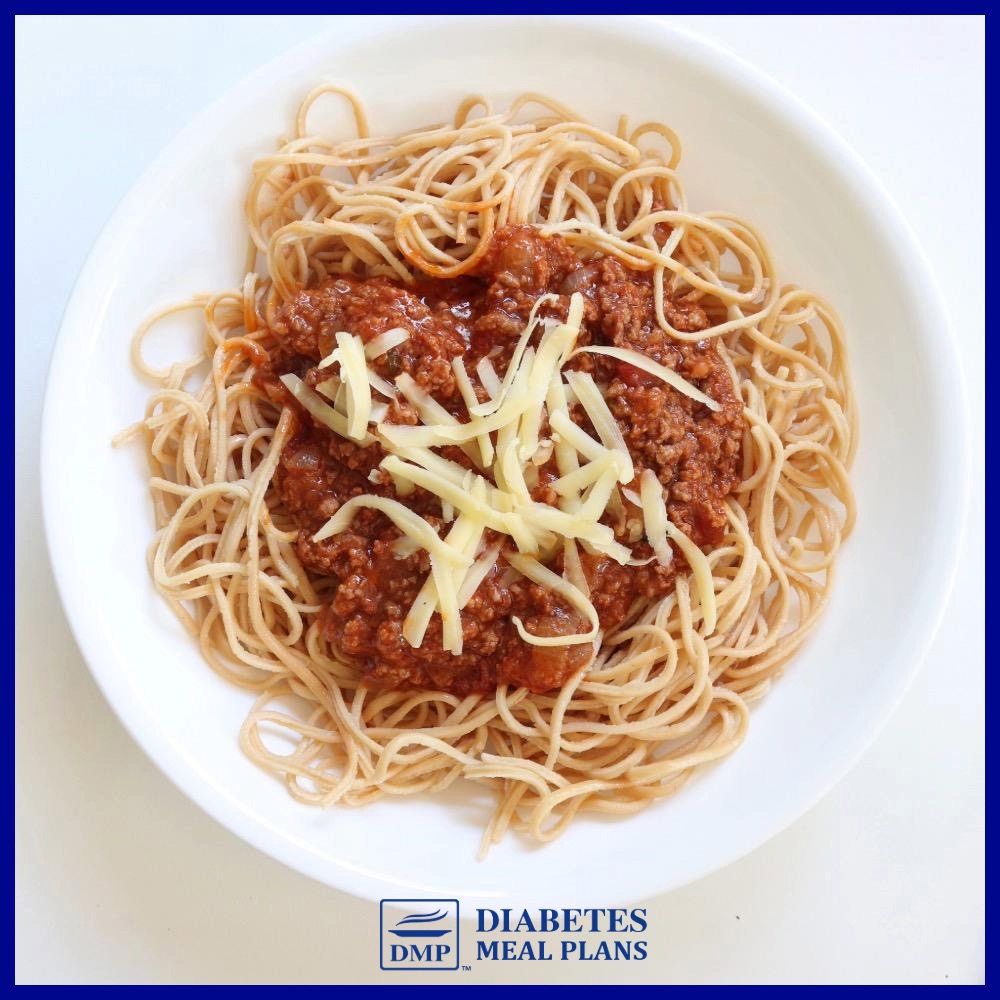Table of Contents[Hide][Show]
Prediabetes is a critical wake-up call, but the good news is that with the right diet and lifestyle changes, it’s possible to reverse prediabetes and prevent type 2 diabetes.
A key part of this process is having a well-planned grocery list to help you make blood sugar-friendly choices.
Here we’ll guide you through creating a prediabetes grocery list that’s been proven to help others with prediabetes achieve normal blood sugar levels, in as little as 16 weeks.
Why Focus on a Low Carb Grocery List?
Carbohydrates are the primary macronutrient that impact blood sugar levels.
When you consume high carb foods, your body breaks them down into sugar (glucose), which can cause blood sugar spikes.

With prediabetes, consistently high blood sugar levels promotes insulin resistance and can lead to type 2 diabetes.
Lowering your carbohydrate intake can help:
- Stabilize blood sugar levels
- Reduce insulin resistance
- Support weight management
- Improve cholesterol and triglyceride levels
The goal is to focus on whole, minimally processed foods that are low in carbohydrates but high in fiber, healthy fats, and protein.
What to Avoid
Before we dive into building your prediabetes grocery list, it’s just as important to know what not to buy.
Avoid high carb, processed foods like:
- White bread, pasta, rice, and cereals.
- Sugary drinks and snacks (sodas, candy, baked goods).
- Sweetened yogurts and flavored milks.
- Highly processed convenience foods.
- Chips and crackers made with refined flours.
Don’t worry, we’ve got plenty of alternative suggestions below when we get to the pantry essentials!
Building Your Prediabetes Grocery List: Fresh First
Your grocery list can be broken into key food categories:
- FRESH FIRST—proteins, vegetables, healthy fats, dairy, nuts and seeds, and fruits
- PANTRY ESSENTIALS—pantry staples, condiments, pasta and noodles, flour and baking, chips and snacks
First, let’s explore fresh first.
1. Proteins
Protein is essential for stabilizing blood sugar and keeping you full between meals. The key is to prioritize fresh, nutrient-dense options.
- Fresh meats and seafood: Chicken thighs, turkey breast, ground beef or steak (no, red meat does not cause diabetes), lamb chops, pork chops, salmon, mackerel, sardines, shrimp.
- Eggs: A versatile and cost-effective source of high-quality protein.
- Tofu and tempeh: Great plant-based protein options.
- Deli or lunch meats: Processed meats are not an ideal choice for everyday eating. Try to choose nitrate-free, sugar-free options like roast beef or turkey slices.
- Bone broth: A nourishing base for soups and stews.
Pro Tip: Check labels for hidden sugars or breading in packaged proteins.
2. Non-Starchy Vegetables
Non-starchy vegetables are rich in fiber, vitamins, and minerals, and they have minimal impact on blood sugar. Non-starchy veggies are the best type of carbohydrates to eat!
- Greens: Spinach, kale, Swiss chard, arugula (rocket), romaine lettuce.
- Cruciferous vegetables: Broccoli, cauliflower, Brussels sprouts, cabbage.
- Low carb veggies: Zucchini (courgette), asparagus, green beans, bell peppers (capsicum), cucumber.
- Flavorful additions: Mushrooms, onions, garlic, ginger.
- Veggie snack options: Celery sticks, cherry tomatoes, snap peas.
Pro Tip: Frozen vegetables are convenient, budget-friendly, and retain their nutrients.
3. Healthy Fats
DO NOT FEAR FAT – we absolutely need it — FAT IS AN ESSENTIAL NUTRIENT!
Incorporating healthy fats into your diet helps curb cravings, supports brain function, and provides lasting energy.
- Oils: Olive oil, avocado oil, coconut oil.
- Avocados: A low carb superfood rich in heart-healthy monounsaturated fats.
- Butter and ghee: Butter is better than processed margarine.
- Fatty fish: Salmon, mackerel, and sardines (also listed under proteins).
- Olives: A convenient snack or salad topping.
Pro Tip: Avoid processed seed oils (e.g., canola, soybean, basic vegetable oil) and trans fats.

4. Dairy and Dairy Alternatives
Dairy can be part of a low carb diet and it’s fine to choose full-fat dairy. The key is to choose unsweetened options—it’s the sweeteners that cause blood sugar spikes.
- Cheese: Cheddar, mozzarella, gouda, cream cheese, feta.
- Yogurt: Full-fat plain yogurt or Greek yogurt (unsweetened).
- Milk or milk alternatives: Cows milk or unsweetened almond milk, coconut milk, soy milk, or cashew milk.
- Heavy cream: Use in recipes or coffee, in moderation.
Pro Tip: Skip flavored yogurts and creamers, as they often contain added sugars.
5. Nuts and Seeds
Nuts and seeds provide a crunchy, satisfying snack and are rich in fiber, protein, and healthy fats.
- Nuts: Almonds, walnuts, pecans, macadamia nuts.
- Seeds: Chia seeds, flaxseeds, sunflower seeds, pumpkin seeds.
- Nut butters: Almond butter or peanut butter (choose natural, unsweetened options).
Pro Tip: Stick to small portions, as nuts and seeds are calorie-dense.
6. Low Carb Fruits
While fruits contain natural sugars, it’s the lower carb fruit options that fit perfectly into a prediabetes-friendly diet.
- Berries: Blueberries, raspberries, blackberries, strawberries.
- Melons: Cantaloupe, honeydew (in small portions).
- Stone fruits: Apricots, plums (sparingly).
Pro Tip: Limit fruits to small portions and pair them with protein or fat for better blood sugar control.
Always Prioritize Fresh First
Fresh foods like proteins, vegetables, and lower carb fruits should form the foundation of your low carb prediabetes diet.
They are nutrient-dense, minimally processed, and provide the essential vitamins, minerals, and fiber your body needs to thrive.
Prioritizing fresh, whole foods ensures you’re nourishing your body while supporting stable blood sugar levels.
But, of course there are plenty of pantry staples you need to keep on hand, so let’s explore those now.

Building Your Prediabetes Grocery List: Pantry Essentials
Stocking your pantry with the right staples ensures you always have healthy options on hand.
And we understand, finding suitable replacements for high carb staples like pasta, noodles and snacks, can seem challenging (at first).
These foods are deeply ingrained in our modern diets, but they can wreak havoc on blood sugar levels—so you need to cut them out, or at least cut them down. Believe us, we’ve been doing this a long time, and it’s the most effective way to get blood sugar to normal!
Thankfully, there are plenty of lower carb alternative food optiohttps://diabetesmealplans.com/31933/diabetic-friendly-baked-beans/ns that let you enjoy your favorite dishes without the carb overload.
1. Pantry Staples
- Canned goods: Such as coconut milk, canned tomatoes, green beans, tuna, sardines, baked beans, pumpkin puree, and tomato paste.
- Sweeteners: Stevia, allulose and monk fruit—often these come in a blend.
- Seasonings: Herbs, spices, salt and pepper.

2. Flavorings and Condiments
Sauces and condiments can be sneaky sources of sugar and carbs. Always read food labels to check the ingredients and nutrition facts.
- Ketchup: Look for sugar-free ketchup or make your own with canned tomatoes and stevia.
- BBQ Sauce: Opt for sugar-free or low carb brands, or create a homemade version using balsamic vinegar and tomato paste.
- Soy Sauce, mustard, and hot sauce: These are all low in carbs and fine to use.
- Mayonnaise: Choose full-fat mayonnaise made with healthy oils. It’s often hard to find mayonnaise made with olive or avocado oil, so the next best option is those made with canola oil or organic high oleic sunflower oil. Avoid mayonnaise made with soybean oil or generic vegetable oil.
- Salad Dressings: Make your own with olive oil, vinegar, and herbs, or choose sugar-free store-bought options.
3. Pasta and Noodles
Traditional pasta and noodles are some of the highest carbohydrate foods, which leads to blood sugar spikes and difficultly regulating blood sugar levels.
Here’s some great alternatives to keep in your pantry:
Shirataki Noodles (Miracle Noodles): These are made from konjac root, are virtually carb free, and mimic the texture of traditional noodles.
Palmini Noodles: Made from hearts of palm, these are low carb and work well in creamy or tomato-based dishes.
Pasta Elbows or Fettuccine: A low carb option to make a macaroni cheese or a creamy bacon and mushroom dish.
Soybean or Edamame Noodles: High in protein and fiber, these noodles are made from soybeans or edamame and offer a firmer texture, making them an excellent alternative for traditional pasta dishes.
Kelp Noodles: Made from kelp (a type of seaweed), these translucent, slightly crunchy noodles are extremely low in carbs and calories, making them a great option for stir-fries, salads, or soups.

4. Flour and Baking Mixes
Traditional wheat flours are carb-heavy and can quickly derail your efforts. Instead, choose low carb flours and baking mixes that allow you to recreate your favorite baked goods.
- Almond Flour: Rich in healthy fats and protein, this is a staple for low carb baking. Delicious for making cookies or as a base for cheesecake.
- Coconut Flour: High in fiber and very low in carbs, it’s perfect for pancakes or muffins. Though some people don’t like it, due to it’s high fiber content can make it dry and difficult to swallow.
- Flaxseed Meal: Adds fiber and a nutty flavor to baked goods and can replace part of the flour in recipes.
- Psyllium Husk Powder: A fiber-rich ingredient that adds structure to breads and baked goods. Psyllium husk is great for helping to lower blood sugar levels!
- Low-Carb Baking Mixes: Some brands offer pre-made blends for pancakes, muffins, and cakes, but check labels for hidden carbs or artificial ingredients.
5. Chips and Snacks
Chips and crackers are convenient but often packed with carbs, unhealthy oils, and artificial ingredients. With the right alternatives, you can enjoy a satisfying crunch without the carb overload.
- Cheese Crisps: Made by baking or frying cheese until crispy, these are a great chip substitute. You can also purchase reasonable cheese crisps such as Sonoma Cheese Crisps or ParmCrisps.
- Snack boxes: These are great but it can’t just be any snack box. You have to be mindful to choose quality snack boxes that help your loved ones maintain healthy blood sugar levels. Bunny James specialty snack box filled with healthy low sugar chips, candy, jerky and nuts.
- Protein bars: Offer an appetizing snack. Try Power Punch protein bars in all 14 delicious flavors for an energizing daily snack.
- Pork Rinds: A crunchy, carb free snack or breading substitute.
- Beef Jerky: Choose sugar-free and nitrate-free options.
- Chocolate: Look for dark chocolate with 85% cocoa or higher. Or try sugar free chocolates such as Luxurious Belgian sugar free indulgent truffles or unsweetened organic rich dark chocolate.
Pro Tip: Keep a few pre-portioned low carb snacks on hand to curb cravings while staying within your goals.
Conclusion
With the right prediabetes grocery list, you’re setting yourself up for success in getting your blood sugar and A1c levels back to normal.
Use this guide to plan your next shopping trip, and remember: small, consistent steps lead to big changes over time!

Chops Huysamen
Please help me overcome my pre diabetic diagnosis.
Dr Jedha
Hi Chops, grab a copy of our food list to get started, or for the best support to reverse prediabetes, consider joining us as a member.